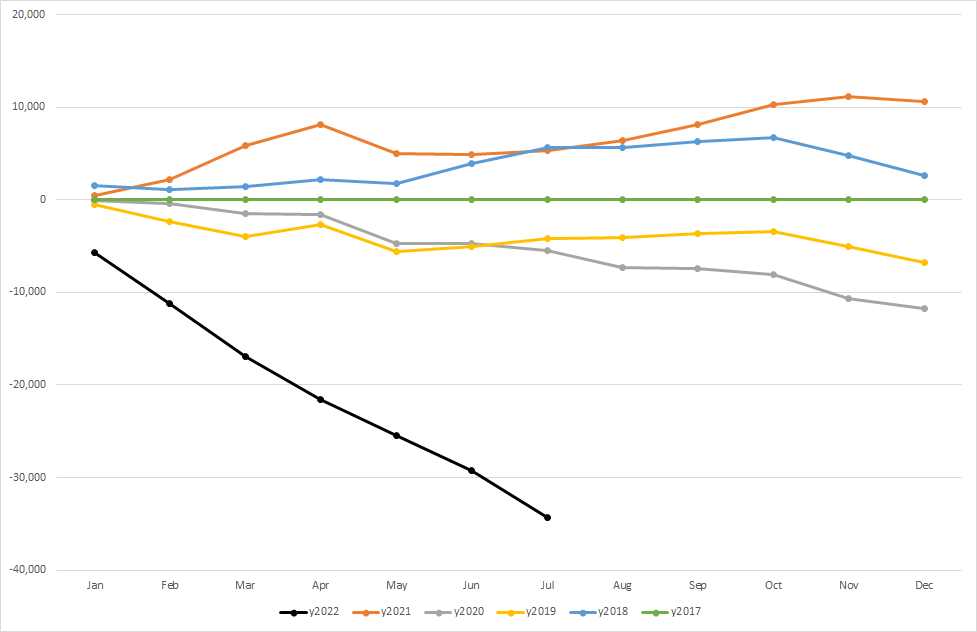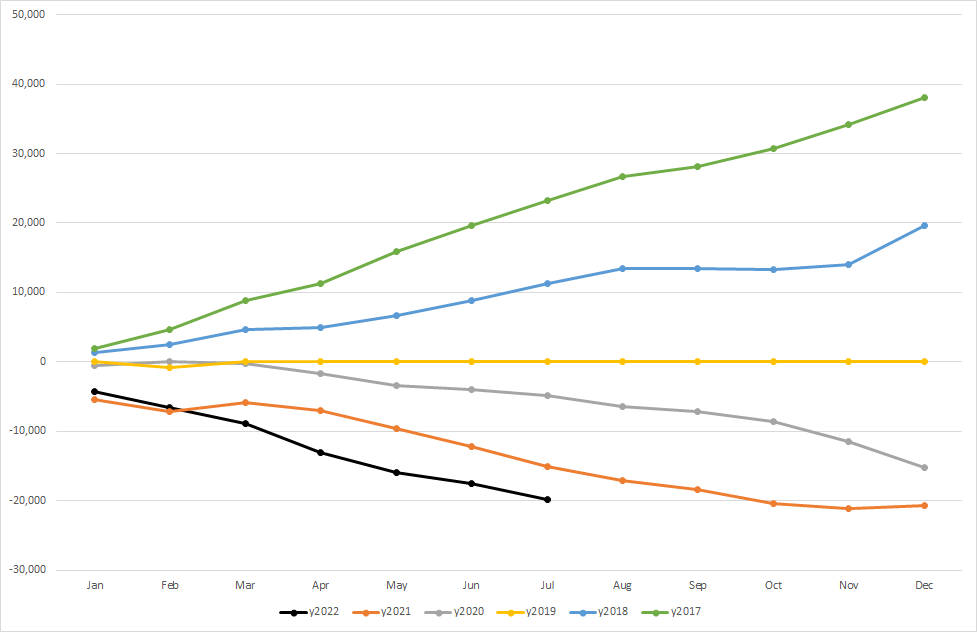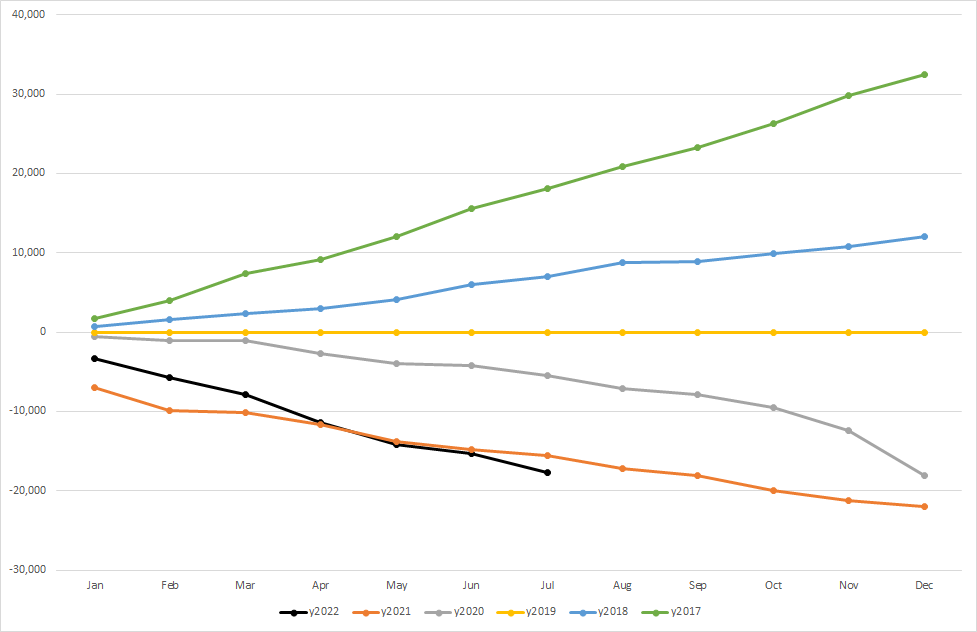To get a better idea about what is happening to birth rates, I collected data for all larger Western European countries and compiled diagrams as I had done for Germany (monthly birth figures 2017-2022; difference, per month, to median value of cumulative birth figures for 2017-2021). As data sources, I used the web pages of the national statistical agencies, the UN database, and Moody’s. Depending on country, data for 2022 stop between June and August. For England and Wales, I could not find figures for 2022, so I scaled the numbers of women giving birth from the UKHSA report (birth figure 2022 = birth figure 2021 * (women 2022 / women 2021)). For Norway and Denmark, Moody’s only offered quarterly data for 2022, and I distributed these evenly to three months each.
Let’s start with Germany (from the previous post):
Switzerland is almost exactly a scaled version of Germany:
And so is Sweden (but with less of a baby boom in 2021):
England and Wales are not too far away:
As is Austria:
And Norway:
And Denmark (big baby boom in 2021):
Even stranger 2021 figures for the Netherlands:
Belgium is a mixed bag:
Going south, different trends seem to interfere. Here’s France (from the previous post):
And Italy (similar to France, but with 2021 not that bad):
And Spain:
And Portugal:
My impression is that the harsh lockdowns in Southern Europe have accelerated an existing trend of declining birth rates. It is therefore difficult to judge what is happening there in 2022. Central and Northern Europe, on the other hand, seem to have dedicated 2021 to family planning. What do you think?
















It does seem that the decline in birthrate for 2022 in Northern Europe could be offset to some degree by the bonanza year of 2021, I mean, who a wants a baby 2 years on the trot. However, I don't feel this explains the dip completely by any stretch of the imagination. Is there a precedent, I wonder, for this in the past of offset of a previous bumper year?
How does Ireland compare? Do you have their numbers?